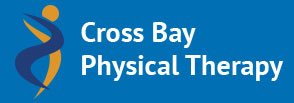Range of Motion Exercises
Range of motion refers to the distance and direction joint moves between a flexed (bent) position and an extended (stretched) position. It also refers to therapeutic exercises designed to increase this distance in a joint's movement.
Several health issues contribute to restricted range of motion, including:
- Problems with body mechanics
- Swelling
- Inflammation
- Muscle spasms
- Infection
- Disease, such as arthritis
Range of motion is also one of the dimensions used in Functional Capacity Evaluations to measure and determine joint flexibility.
There are three types of range of motion exercises:
- Passive Range of Motion (PROM): With PROM, the client applies no effort to move the joint, which is moved through a variety of stretching exercises by a physical therapist or with the help of equipment.
- Active Assisted Range of Motion (AAROM): With AAROM, the client uses the muscles around a weak joint to complete stretching exercises with the help of a physical therapist or equipment.
- Active Range of Motion (AROM): With AROM, the client performs stretching exercises, moving the muscles around a weak joint without any aid.
